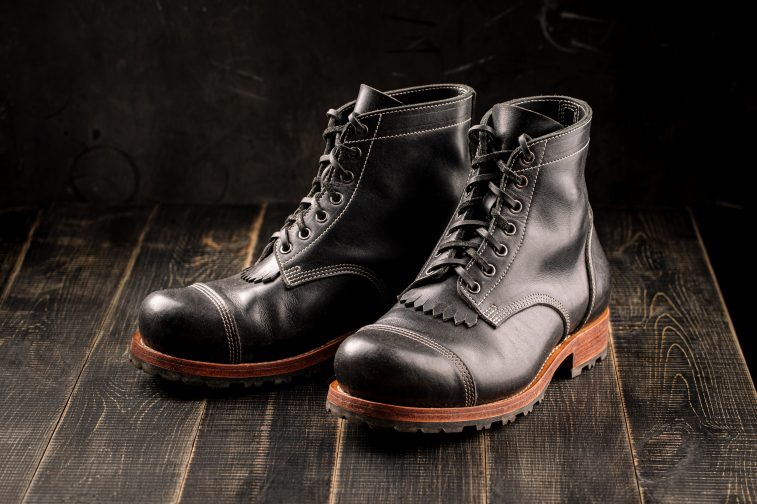Starting a shoe business can be daunting, especially if you’re unsure where to start. Fortunately, with the right preparation and research, you can set up a successful shoe business in no time! This blog post will provide all the information necessary for aspiring entrepreneurs looking to get their foot in the door of the shoe industry.
Research the Industry
The first step in starting a shoe business is to research the industry. You should familiarize yourself with the different types of shoes available, understand their target markets and demographics, and be aware of relevant trends. A shoe store could specialize in athletic shoes, sandals, boots, dress shoes for men and women, or a combination of all types. Researching the competition is also an important part of the process; look at other stores’ pricing models and quality standards to ensure that your business stands out from the crowd. Additionally, learn about relevant industry regulations such as.
1. Licensing: Depending on the state, you may need to obtain a business license or permit to operate a shoe store. Suppose you are selling shoes online; in that case, you’ll need to comply with applicable e-commerce laws.
2. Taxes: Depending on the state and/or locality where your business operates, you may be required to pay sales or shoe sales tax. As the shoe store’s startup costs can be quite expensive, it’s important to understand the applicable tax requirements.
3. Import/Export: If you plan on importing shoes from other countries, you may need to apply for an import license and comply with relevant regulations. On the other hand, if your business plans on exporting shoes to other countries, make sure you understand the export regulations.
4. Shipping: If you sell shoes online, you’ll need to research the most cost-effective way to ship them. Usually, the shoe store business owner is responsible for paying the shipping costs, so it’s important to understand the various options available.
These are just a few of the topics you should research and understand before starting your shoe business. Researching the industry will help you create a strong foundation for success.
Develop a Business Plan
Once you’ve done your market research, it’s time to develop a business plan for your shoe store. A solid business plan should include information about who will manage the store, what type of products you’ll sell, how much capital you need, what marketing strategies you’ll use, and any potential risks or challenges that impede progress. Additionally, be sure to factor in start-up costs such as renting/leasing space, hiring employees, purchasing inventory, and acquiring the necessary equipment for running a successful shoe store.
A well-thought-out business plan will not only give you an idea of where to start but also help you secure funding from investors or lenders if needed. It’s important to remember that a business plan constantly evolves; as your business grows and changes, so should your plan.
Find Funding
The next step in starting a shoe business is securing the funds to launch. Depending on the type of business structure you choose—sole proprietorship, partnership, corporation, etc.—you’ll need to find appropriate funding options such as bank loans, venture capital investors, grants from government agencies or private foundations, angel investors, or personal savings.
For some entrepreneurs, bootstrapping is the best option to start their shoe business. This means relying on personal resources and operating with a minimal budget by reallocating funds from other expenses to cover the necessary startup costs instead of taking out loans or obtaining investments. Consider using your income, personal savings, or credit cards for short-term financing.
When taking out a loan, you’ll need to consider the application process and its terms carefully before making any decisions. Bank loans can be helpful if you have a solid business plan and collateral to offer as security. Alternatively, SBA (Small Business Administration) offers low-interest loans and other resources to help small businesses start.
The success of your shoe business also depends on the availability of venture capital investors or angel investors. You’ll need to approach potential investors with a comprehensive business plan and documentation demonstrating how you plan to use the funds, including research of your target market, product design, marketing plans, and financial statements.
Finally, it’s worth considering more unconventional funding sources, such as crowdfunding platforms like Kickstarter or Indiegogo. By setting up a page with your business proposal, you could appeal to investors willing to financially support your dream of starting a shoe business.
Develop Your Products
Once you have the funds to launch your shoe business, developing a product line is next. The type of shoes you produce will depend on your target market segment and customer base—athletic wear, workwear, fashion footwear, or children’s shoes.
It’s important to conduct a market research study to gain insights into customer needs and preferences, which can help you decide what shoes to develop, how much they should cost, and where to sell them. You’ll also need to consider the design and materials used—from leathers, fabrics, colors, trims, and soles—and the manufacturing method.
Creating prototypes is a crucial step in developing your products. If you’re working with a shoe manufacturer or an independent designer with experience producing product samples, this will be very helpful. However, suppose you don’t have any connections within the footwear industry yet. In that case, numerous online resources provide tips for creating prototypes from home or local makerspaces that can help you with 3D printing and prototyping.
Finally, you’ll need to conduct quality control tests to ensure that the shoes meet all safety standards and customer expectations in terms of design and comfort. Quality control also includes inspecting the product packaging before shipment.
Are you passionate about footwear and want to start or grow your own shoe business?
Contact Growth Hackers
Come Up with Your Business Name and Brand Identity
Once you have a solid product line, developing your business name and brand identity is time. This is essential in differentiating yourself from competitors and establishing credibility among potential customers.
When selecting a name, strive for something that is memorable and reflects the values of your shoe business. It could be your name or a combination of words that evoke customer feelings, such as adventure, comfort, or style. Think about what makes your shoes unique—maybe you use recycled materials or specialize in handmade designs—and consider incorporating this into the name.
Your business logo should also be carefully crafted to represent who you are as a company and communicate your overall message. Pay attention to its colors, fonts, and shapes to create a strong visual identity. A good logo should be simple yet meaningful and easy to recognize.
Once you have settled on your name and brand identity, it’s time to create an online presence by setting up a website, blog, and social media accounts for your shoe business. This will help potential customers find out more about your products and services and provide an effective way to reach out to them with promotional offers, discounts, and announcements.
Register Your Footwear Business
Once your branding and online presence are ready to go, it’s time to register your footwear business. Depending on your legal structure (sole proprietorship, partnership, or corporation), different steps are involved in registering your business.
For instance, if you want to create a sole proprietorship, you must register with the local government in your country and obtain a license for whatever type of activity you plan on running. On the other hand, if you decide to incorporate as a more formal entity, such as a Limited Liability Company (LLC), then you’ll need to file paperwork with the state government and pay any applicable fees.
Regardless of your choice, you’ll also need to register for taxes and get a tax identification number from the IRS. This will allow you to start filing business expenses, making payments, or receiving money from customers while legally keeping track of your earnings and obligations.
Lastly, you’ll want to contact an attorney familiar with local laws which can provide advice on setting up a business in compliance with the regulations of your country. This step ensures that your shoe business runs smoothly without legal complications.
Get Insurance
Insurance is an important part of running any kind of business, especially for footwear companies, as accidents involving customers or employees can occur at any time.
Most businesses need at least two types of insurance: liability and property. Liability insurance covers any claims due to negligence or accidents, while property insurance protects against damage or theft to your warehouse or inventory goods.
If you plan on hiring employees for your shoe business, getting workers’ compensation insurance is also a good idea. This policy will cover medical expenses if an employee gets injured or falls ill while working for you. Moreover, it can protect you from getting sued by employees in case of workplace-related injuries.
It’s always best to discuss all these options with an expert before deciding which one is right for your business needs. That way, you can save money on unnecessary coverage and ensure that your footwear business remains protected.
Set Up Logistics
The next step in launching a successful shoe business is setting up logistics such as warehousing, inventory management, shipping and delivery services, marketing and sales channels, and customer service systems.
For warehousing needs, consider using third-party logistics providers with experience storing and managing footwear products for retailers or ecommerce businesses. For small businesses that don’t have enough storage space at their office location yet, these companies can help you manage your inventory and ship orders directly to your customers.
For sales channels, you’ll need to set up a website or online store where customers can purchase your products. There are various ecommerce solutions available at different price points that allow you to list products, create product pages, and accept online payments. The shoe line you plan to offer should also be available on various online marketplaces such as Amazon, eBay, or Etsy.
You’ll also need to decide how to market the business and determine what channels (social media, email marketing, SEO) will be best for reaching potential customers. Once again, many tools are available for managing these tasks—from CRMs for customer segmentation and lead nurturing campaigns to analytics software for tracking conversions. Many online shoe stores also offer a variety of customer service solutions, such as live chat and FAQs pages. Your shoe company should also set up a customer service system that meets your customers’ needs.
Launch Your Business
Now that you have a business plan, funds, and the necessary logistics, it’s time to launch your shoe business. Here are some tips for a successful launch:
1. Create a buzz around your brand by running campaigns across various channels such as social media, email marketing, SEO, and influencer marketing.
2. Develop partnerships with other brands or bloggers to reach more potential customers.
3. Create special offers and discounts on new product launches to incentivize buyers and encourage them to share their purchases with their network of friends/family/followers.
4. Provide excellent customer service—be responsive and quick to answer queries or solve problems. Many successful shoe stores also have a loyalty program to reward repeat customers.
5. Monitor your progress and make adjustments as needed—customers’ preferences and industry trends change quickly, so you must be prepared to adapt and change to remain competitive.
6. Invest in good-quality product photography and product descriptions to help customers make informed purchases.
7. Offer incentives such as free shipping or loyalty points to keep customers coming back for more.
8. Utilize data-driven analytics to track user behavior, measure marketing ROI, and optimize campaigns accordingly. For online shoe store owners, there are several tools available that can help you with these tasks.
Take the first step towards your entrepreneurial dream and start your shoe business today!
Maintain Momentum
As you manage your business, remember to keep the momentum going. This means consistently improving and tweaking your operations based on customer feedback, reviews, or trends. You should also remain informed about the latest fashion trends and industry developments to continue offering products that customers will love. Lastly, don’t forget to review your finances regularly to ensure profitability and growth.
What are the Challenges of Starting a Shoe Business?
Starting and running a shoe business can be quite challenging, especially if you are new to the industry. Here are some of the potential challenges you may face.
Competition
The footwear industry is highly competitive, with established players dominating the market share. You must find ways to differentiate your business and stand out from the competition to attract customers. Usually, a shoe business online will compete with major retailers like Amazon, Walmart, and Target. You must be prepared for the competition and have a comprehensive marketing plan. You should also be familiar with the current trends in the market and develop strategies that are tailored to attract potential customers. In shoe selling, customer experience is key.
Cost of Production
Starting a shoe business can be expensive due to the cost of manufacturing and producing materials. You will need to invest in good quality materials that are durable yet affordable. You may also have to pay for custom patterns or designs for your shoe business.
Furthermore, if you choose to manufacture overseas, you may incur additional costs, such as shipping fees. You must research the costs associated with production and find ways to reduce your expenses. Usually, the sports shoes businesses have to make a large investment in product development, marketing, and advertising. And when a shoe brand reaches a certain level of popularity, they also need to upgrade its production facilities.
Logistics
The logistics of running a shoe business can be complicated and time-consuming. You must manage inventory, paperwork, packaging, storage, shipping, returns, and customer service. You should have a streamlined process that allows you to track orders and stay on top of deadlines. Additionally, you may want to consider working with third-party companies that specialize in handling business logistics. This way, you can free up more time and resources for other aspects of the business, such as marketing or product development. The most successful shoe stores use effective logistics systems to ensure smooth operations.
E-commerce
Setting up an e-commerce platform for your business is essential to reach a larger customer base. You will need to invest in a website, payment system, and shipping process. Furthermore, you may consider setting up a brick-and-mortar store if you plan to sell shoes offline. While having both options can be beneficial, it does require more resources. You should research and find the best e-commerce platform for your business that meets all your needs. The global footwear market is expected to grow steadily over the next few years, so now is a great time to start your own shoe business.
Many challenges are associated with starting a shoe business, but these can be managed with proper planning and execution. You can overcome the obstacles of running a successful shoe business with the right strategies and resources.
Final Words on How to Start a Shoe Business
Starting a shoe business requires hard work, dedication, and perseverance. You must be passionate about shoes to succeed in this business. You must research market conditions and industry trends before launching your product line. You should also consider investing in quality marketing materials and establishing an effective distribution channel. Whether it is an online shoe store business or a physical retail store, you must be prepared to face the challenges.
Furthermore, you must have reliable suppliers, comprehensive customer service, and a firm understanding of the legal aspects related to the shoe industry. Starting a shoe business can be an exciting and rewarding experience with careful planning, a well-executed marketing plan, and hard work. Good luck!
Growth Hackers is a full-service small business branding company helping businesses from all over the world grow. There is no fluff with Growth Hackers. We help entrepreneurs and business owners start a shoe business, increase their productivity, generate qualified leads, optimize their conversion rate, gather and analyze data analytics, acquire and retain users and increase sales. We go further than brand awareness and exposure. We make sure that the strategies we implement move the needle so your business grow, strive and succeed. If you too want your business to reach new heights, contact Growth Hackers today so we can discuss about your brand and create a custom growth plan for you. You’re just one click away to skyrocket your business.









